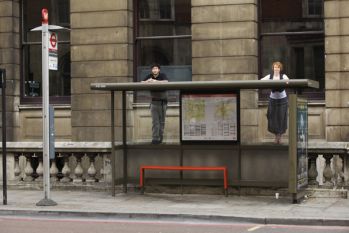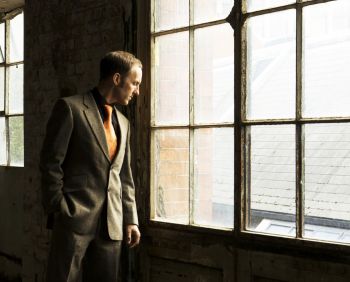Worries that London 2012’s Cultural Olympiad had fallen at the first hurdle – as it seemed when the proposed Olympic Friend-ship, carrying a cargo of British artists and philosophers around the world, was scrapped – can be assuaged. The organisers of the London Olympics have, in fact, turned their course around: instead of this monumental, nationalistic, elitist, pretentious idea, they have moved to the local, the inclusive, the relatable. Artists taking the lead, a co-production of Arts Council England and London 2012, has announced the 12 public art projects it is commissioning for a total of £5.4 million, all to come to fruition by the Olympics.
There are certain projects whose boldness or silliness make them tall poppies, visible and ripe for a critical scything. Shauna Richardson, representing the East Midlands, will create the Lionheart installation, exploring the values lions and the Olympics share (supply your own qualities here) through the medium of crocheted wool, one of the chief exports from Richard the Lionheart’s heartland. (It all comes together.) Three lions, each 30 feet tall, will be displayed in Nottingham, to loom over the city.
Scotland will see the destruction of part of a forest for Craig Coulthard’s Forest Pitch, where a football pitch will be created deep within a forest by felling trees. After one match has been played, the forest can reclaim its space.
The environment is at the centre of the North-East’s project, FLOW, a floating watermill and mill house, which will power itself and some musical instruments. FLOW, by Owl Project and Ed Carter, aims to examine how local industry and the river have sustained and exploited one another. Quite what is artistic about this apparent science project is not clear.
 Other artists take the term “public art” to mean “art created by the public”, which – as Anthony Gormley’s One & Other on the fourth plinth in Trafalgar Square has demonstrated – can be provocative and kaleidoscopic. London probably has the most kaleidoscopic project, called Bus-Tops: bad pun, good idea. Alfie Dennen and Paula Le Dieu (pictured right) will install LED panels on top of 40 bus shelters in London, and the public can submit their own ideas for images, text and animations through the web, mobile apps and other media.
Other artists take the term “public art” to mean “art created by the public”, which – as Anthony Gormley’s One & Other on the fourth plinth in Trafalgar Square has demonstrated – can be provocative and kaleidoscopic. London probably has the most kaleidoscopic project, called Bus-Tops: bad pun, good idea. Alfie Dennen and Paula Le Dieu (pictured right) will install LED panels on top of 40 bus shelters in London, and the public can submit their own ideas for images, text and animations through the web, mobile apps and other media.
This concept seems much more consciously ‘artistic’ than many of the other projects: there are ideas of beauty and image, contemplations of the aesthetic, as much as of community (as with other projects). Bus-Tops engages with both words in “public art”, since it is concerned with what those outside the art world think is beautiful, an approach which is much more likely to provoke a public dialogue on art than the aforementioned mill.
The public are intimately involved in Robert Pacitti and the Pacitti Company’s project, in the East region. The Pacitti Company will produce a feature film whose material is drawn from "a series of large-scale participatory, outdoor events, exploring themes of trade, defence and migration".
This is another project which is driven by the community, but some of the happenings proposed are terrifyingly anaemic: 205 black flags along the coast will be gradually replaced by the flags of the 205 countries attending the Olympics. This is fine for vexillologists, but what do we learn about the local community from this? It is a vapid gesture, which will work visually for the film but not intellectually.
 Marc Rees’s project for Wales is in danger of being the most condescending of the lot. Titled Adain Avion, it is a DC9 fuselage converted into a "mobile art space", which will be pulled across Wales as a "social sculpture". The towns it visits will welcome it with a festival and will engage with it through artistic, sporting and community activities, which ought to be praised.
Marc Rees’s project for Wales is in danger of being the most condescending of the lot. Titled Adain Avion, it is a DC9 fuselage converted into a "mobile art space", which will be pulled across Wales as a "social sculpture". The towns it visits will welcome it with a festival and will engage with it through artistic, sporting and community activities, which ought to be praised.
Unfortunately, however, this is reminiscent of nothing so much as missionaries landing their planes in Africa, Bible in hand, to the whoops of astonishment of the "natives". The Welsh have seen planes before – they are not as wide-eyed as this project would make them seem.
All of these projects are aimed at taking art outside (even if many of them struggle to qualify as art). London’s Dennen and Le Dieu say, “The ‘art public’ is a new audience for art, one that looks for artistic expression that touches on their world,” and this neatly captures the direction public art is taking us in: art is not just what one finds inside a gallery, but should invade the public sphere too. In this way, these projects are perfect embodiments of our time, art reaching out.
If we contrast these projects with previous commemorative grand artistic schemes in Britain, we have to wonder whether it will have the same effect. Consider the pleasure and enlightenment still available from the museums in South Kensington founded after the Great Exhibition of 1851, or from the Festival of Britain’s impact on the South Bank.
This will leave us, by design, with nothing permanent, which suggests a worryingly evanescent conception of British society. Large museums or concert halls would not be the only way to fix the Cultural Olympiad in the national memory: encouraging a whole generation of children by spending this £5.4 million not on incidents of "art" but on instruments in schools, not on watermills but on watercolour paints, would also have a long-term positive effect.
The reason people enjoy involvement with public art is because they so often feel neglected by the rest of the culture, especially its artistic side. Public art projects are partially used to unify communities, and indeed, one of the key reasons for London bidding for the Olympics was so that East London could be regenerated, building 21st-century communities. What we should be considering, however, is not what wacky sculpture will bring people together but why we have not brought them together in the first place. Public art is a sticking plaster for our wider failures.
While London seems set on the most temporary form of Olympic public art, Olympic public art projects can involve the contrary danger too: Barcelona ossified in its 1992, with its large-scale Miro-esque projects which now dominate the skyline yet mean very little. Britain's, perhaps happily, are temporary. Still, only after 2012 will we be able to tell whether we have been left with a cultural legacy.
Middle picture: Alfie Dennen and Paula la Dieu by Matthew Andrews








![SEX MONEY RACE RELIGION [2016] by Gilbert and George. Installation shot of Gilbert & George 21ST CENTURY PICTURES Hayward Gallery](/sites/default/files/styles/thumbnail_125_x_125_/public/mastimages/Gilbert%20%26%20George_%2021ST%20CENTURY%20PICTURES.%20SEX%20MONEY%20RACE%20RELIGION%20%5B2016%5D.%20Photo_%20Mark%20Blower.%20Courtesy%20of%20the%20Gilbert%20%26%20George%20and%20the%20Hayward%20Gallery._0.jpg?itok=3oW-Y84i)





Add comment